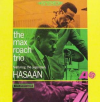Ojai Sam
Staff member
Paul McCartney - Choba B CCCP (1989)

The Beatles Bible sez:
Also known as The Russian Album, Choba B CCCP was the seventh solo studio album by Paul McCartney. It was initially released just in the Soviet Union, but two years later was issued internationally. The album was a collection of cover versions, including several from the early years of rock 'n' roll. The songs dated from the 1940s to the 1960s, plus Midnight Special, a traditional folk song dating from the early 20th century.
They were recorded in the wake of the lukewarm reception to Press To Play, McCartney's 1986 album which attempted to bring a more contemporary sound to his recordings. With sales low and chart success proving elusive, McCartney decided to go back to his roots. In 1987 McCartney held a series of informal Friday night rock 'n' roll jam sessions were held in a studio in the East End of London. The various musicians taking part included Johnny Marr, Trevor Horn, Terry Williams and Elvis Costello, although most were session musicians. Impressed with the results, McCartney decided to record some of the songs at his Hog Hill Mill studio in East Sussex. Twenty-two titles were recorded over two days in July 1987, 14 of which found their way onto Choba B CCCP.
The bulk of the recordings were made on 20 July 1987 with Mick Green, Mick Gallagher and Chris Whitten. Several more were taped on the following day with Gallagher, Nick Garvey and Henry Spinetti, while a third day, 22 July, was devoted to mixing the songs. There was no grand plan to release an album of rock oldies, and the recordings were left for almost a year before it was decided what to do with them. Kansas City, Lawdy Miss Clawdy, Don't Get Around Much Anymore and Midnight Special eventually appeared on the Once Upon A Long Ago 12" and CD singles, and received positive responses from critics and fans.
Since Western rock music was banned by the Soviet state, music lovers there had for many years been forced to make do with illegal bootlegs, low quality copies or smuggled imports, McCartney wished to give his fans there something that was unavailable elsewhere, and with his manager Richard Ogden discussed the idea of issuing a record. Ogden had 50 copies of an album pressed, featuring some of the July 1987 recordings, with artwork designed to look like a Russian bootleg. He gave the LPs to McCartney as a Christmas present that year, and they were distributed to friends and family. Buoyed by the warm reactions, McCartney asked Ogden to contact the Soviet Union's only record label, Melodiya, to see if the album could be properly released there. The title is Russian for Back In The USSR, a 1968 song by The Beatles. Although the title should be written in Cyrillic script, it is commonly converted to Latin letters as Choba B CCCP. It should be pronounced "snova vee ess-ess-ess-er". The cover was designed by Michael Ross. The photograph of McCartney was taken by his wife Linda and had previously appeared inside the gatefold of their 1971 album Ram.
View album 11
The original Russsian LP release had 11 songs, The subsequent CD had 14. This numbered bootleg boasted 15.

The Beatles Bible sez:
Also known as The Russian Album, Choba B CCCP was the seventh solo studio album by Paul McCartney. It was initially released just in the Soviet Union, but two years later was issued internationally. The album was a collection of cover versions, including several from the early years of rock 'n' roll. The songs dated from the 1940s to the 1960s, plus Midnight Special, a traditional folk song dating from the early 20th century.
They were recorded in the wake of the lukewarm reception to Press To Play, McCartney's 1986 album which attempted to bring a more contemporary sound to his recordings. With sales low and chart success proving elusive, McCartney decided to go back to his roots. In 1987 McCartney held a series of informal Friday night rock 'n' roll jam sessions were held in a studio in the East End of London. The various musicians taking part included Johnny Marr, Trevor Horn, Terry Williams and Elvis Costello, although most were session musicians. Impressed with the results, McCartney decided to record some of the songs at his Hog Hill Mill studio in East Sussex. Twenty-two titles were recorded over two days in July 1987, 14 of which found their way onto Choba B CCCP.
The bulk of the recordings were made on 20 July 1987 with Mick Green, Mick Gallagher and Chris Whitten. Several more were taped on the following day with Gallagher, Nick Garvey and Henry Spinetti, while a third day, 22 July, was devoted to mixing the songs. There was no grand plan to release an album of rock oldies, and the recordings were left for almost a year before it was decided what to do with them. Kansas City, Lawdy Miss Clawdy, Don't Get Around Much Anymore and Midnight Special eventually appeared on the Once Upon A Long Ago 12" and CD singles, and received positive responses from critics and fans.
Since Western rock music was banned by the Soviet state, music lovers there had for many years been forced to make do with illegal bootlegs, low quality copies or smuggled imports, McCartney wished to give his fans there something that was unavailable elsewhere, and with his manager Richard Ogden discussed the idea of issuing a record. Ogden had 50 copies of an album pressed, featuring some of the July 1987 recordings, with artwork designed to look like a Russian bootleg. He gave the LPs to McCartney as a Christmas present that year, and they were distributed to friends and family. Buoyed by the warm reactions, McCartney asked Ogden to contact the Soviet Union's only record label, Melodiya, to see if the album could be properly released there. The title is Russian for Back In The USSR, a 1968 song by The Beatles. Although the title should be written in Cyrillic script, it is commonly converted to Latin letters as Choba B CCCP. It should be pronounced "snova vee ess-ess-ess-er". The cover was designed by Michael Ross. The photograph of McCartney was taken by his wife Linda and had previously appeared inside the gatefold of their 1971 album Ram.
View album 11
The original Russsian LP release had 11 songs, The subsequent CD had 14. This numbered bootleg boasted 15.


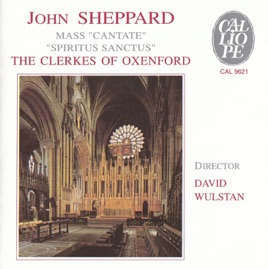

:format(jpeg):mode_rgb():quality(90)/discogs-images/R-2433311-1283790175.jpeg.jpg)

 on the Sam-O-Meter.
on the Sam-O-Meter.
:format(jpeg):mode_rgb():quality(90)/discogs-images/R-2186861-1426092177-1242.jpeg.jpg)

:format(jpeg):mode_rgb():quality(90)/discogs-images/R-15625185-1594983657-2255.jpeg.jpg)

:format(jpeg):mode_rgb():quality(90)/discogs-images/R-3655842-1339099716-4324.jpeg.jpg)
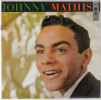
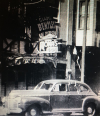
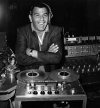
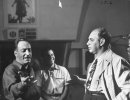
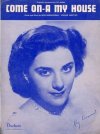
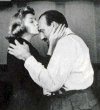
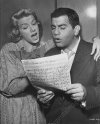

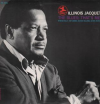
 )
)